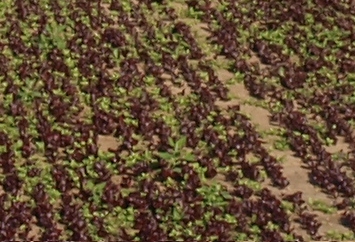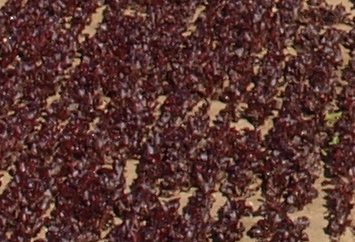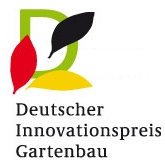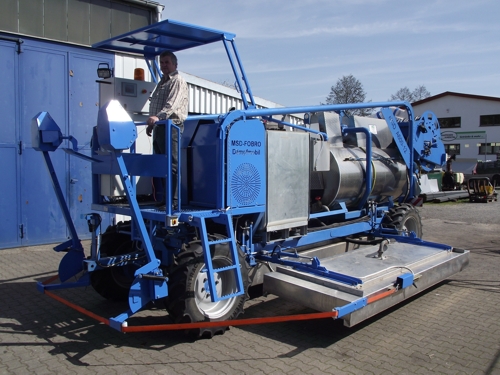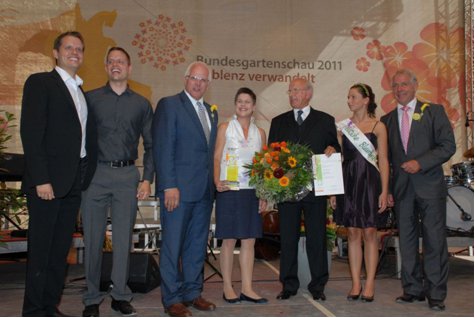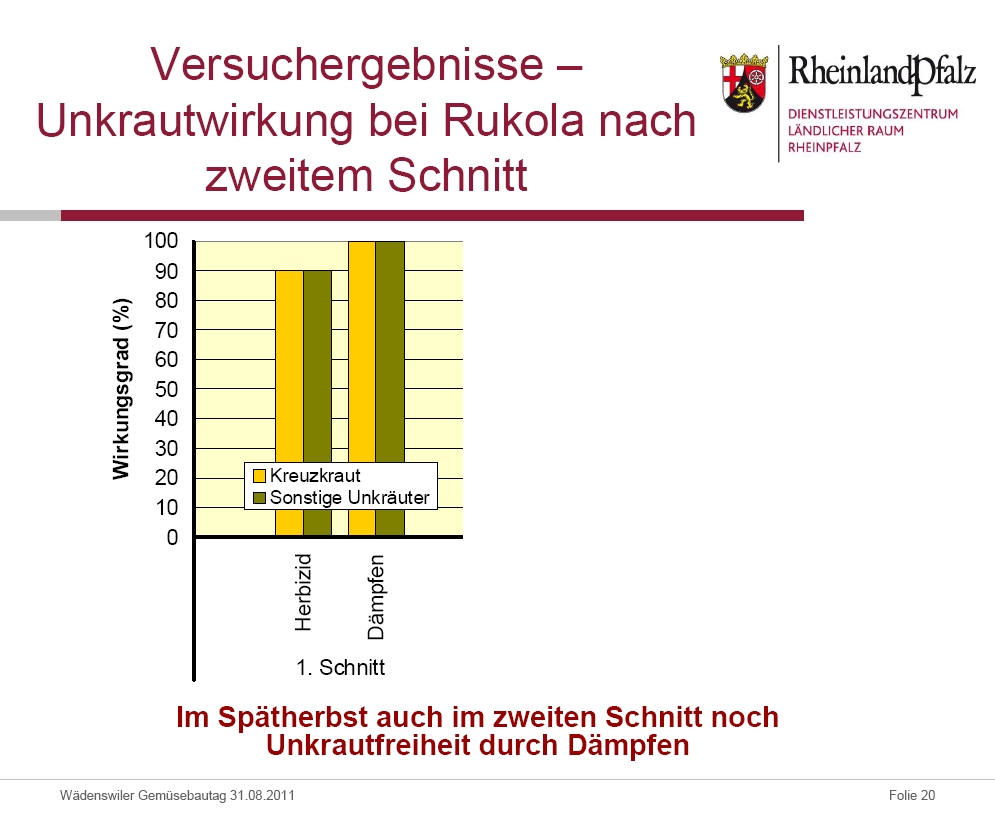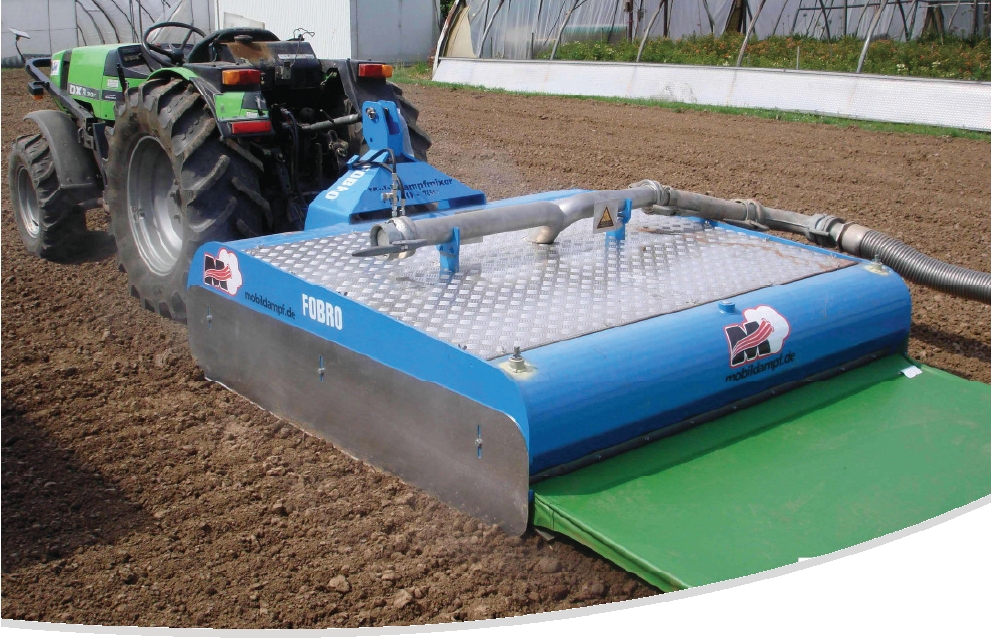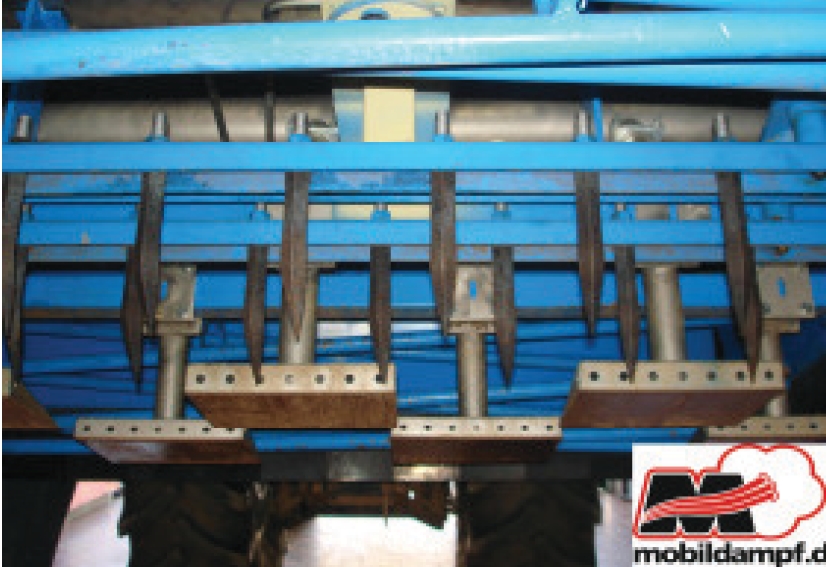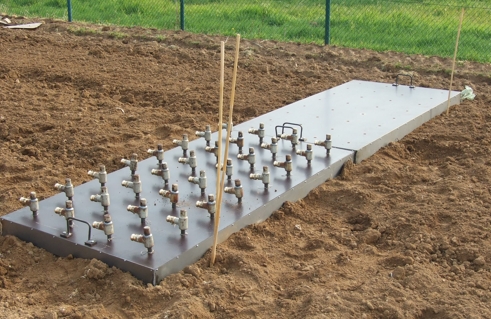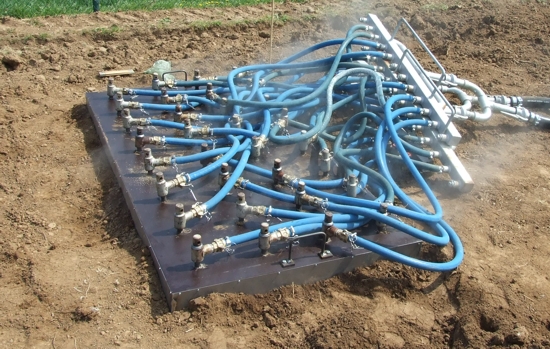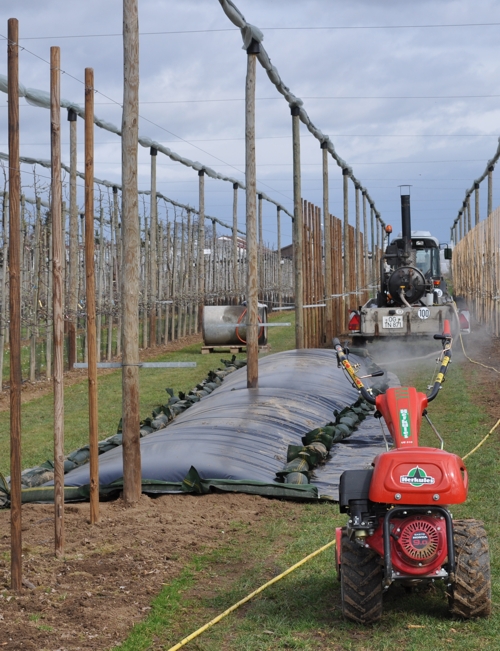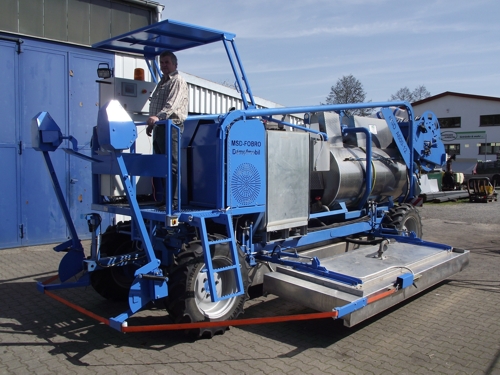The reduction of roof loads due to snow is a top topic again this winter. For this reason, after the first major snow falls in higher areas new tests were made to find out which steaming methods are most efficient.
The big advantage of hot steam in contrast to classic methods to remove snow with shovels is clear: Due to the heat snow flows away as water. There is no need to first remove snow from the roof and then transport it further away from the building.
Moreover labor cost is much lower when using steam.
In order to melt 1kg of snow only 0,1691 kg of steam is needed. Efficient steam generators with an efficiency of 96% only consume 0,015l of fuel to produce this amount of steam.
In order to calculate energy cost density of snow has to be considered, which is about 0,17kg/dm³ = 170kg/m³ for fresh fallen snow.(See http://en.wikipedia.org/wiki/Snow). In order to steam 1 m³ of snow about 2,55l fuel is needed. This amount was confirmed several times in tests.
Based on this knowledge this year 4 steaming methods were tested and compared.
1. Steaming Hood
The area is covered with a light hood made of aluminium. Then hot steam is induced. The hood is moved to another location by hand once all snow has melted. The results are always 100%.
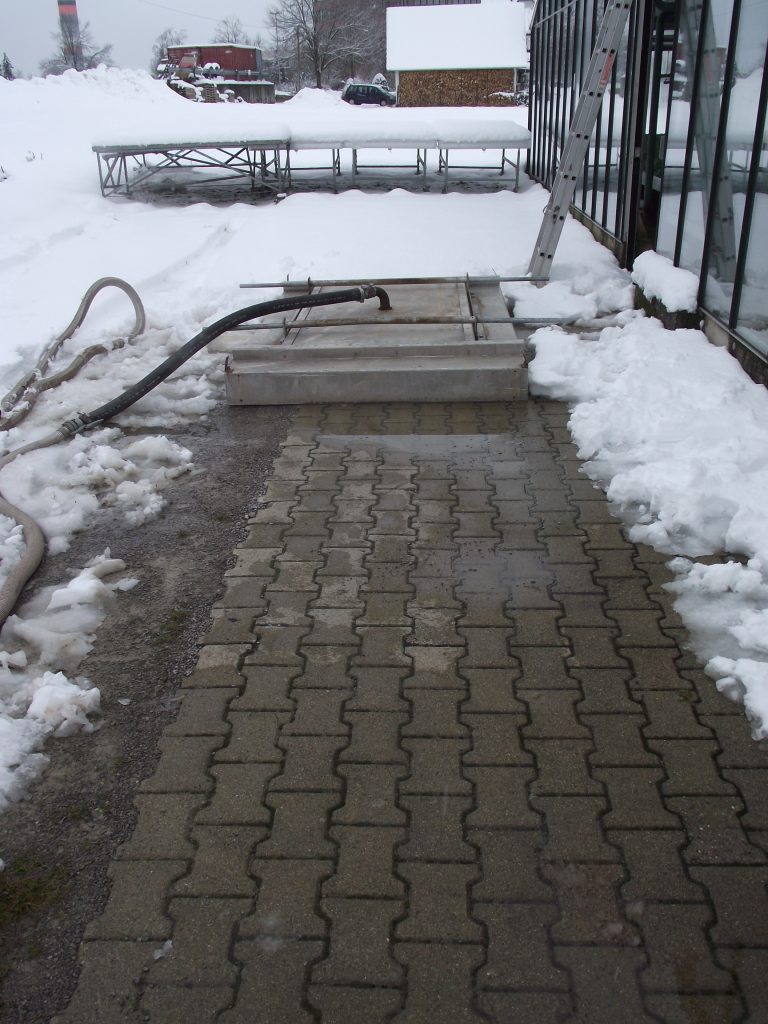
Only 15 kg of steam were used to melt all snow on an area of 3.2m² within only 4.5 minutes. (about 0,5m³/89 kg snow).
2. Steaming pipes with steaming sheets
Perforated pipes are laid out on the snow covered area in regular distances and covered with sheets. Hot steam is induced into the pipes to melt snow.
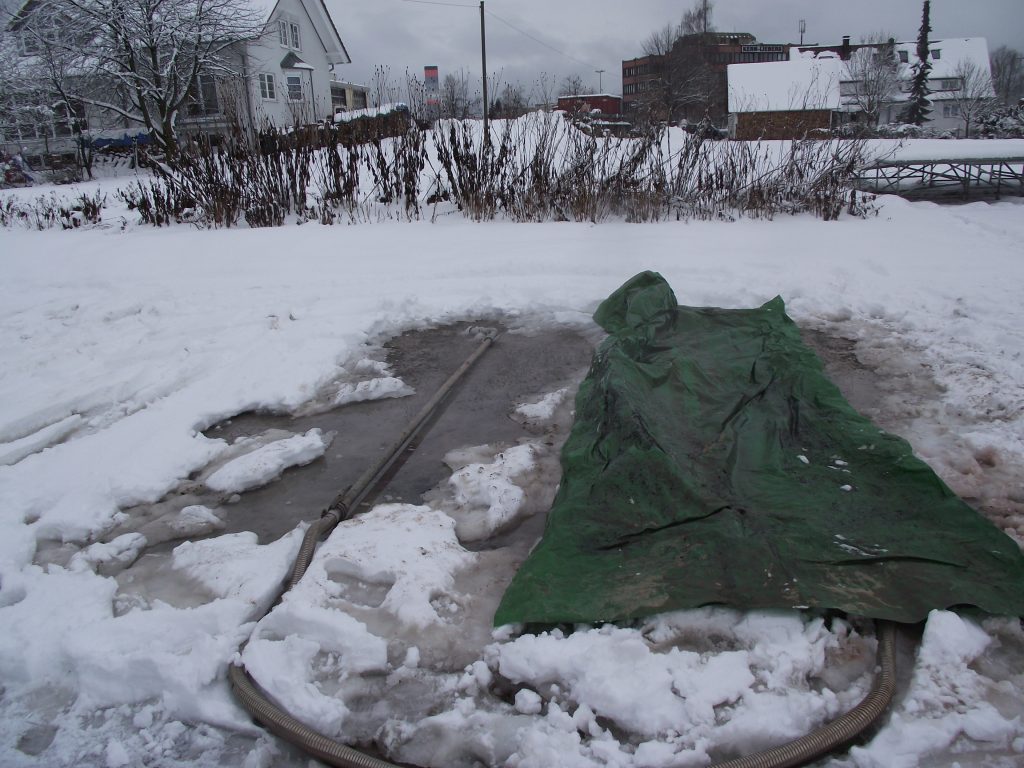
Most snow melted away. However despite the continuous induction of steam, snow isles remained as no optimal melting affect was achieved due to slightly higher snow density.
3. Steaming pipes in roof gutter
Perforated pipes are laid out in the roof gutter of a green house and continuously covered with snow from both sides while steam evaporates.
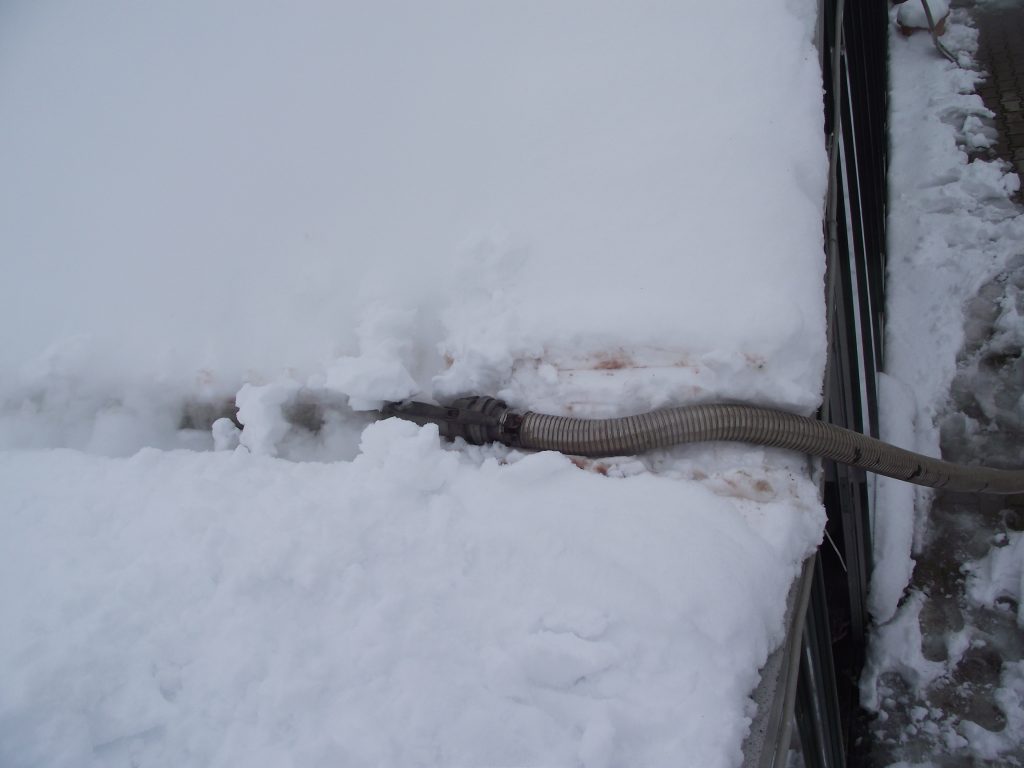
As long as the pipe is constantly covered with snow, an optimal melting affect could be achieved. However, a constant use of labor was needed to supply snow.
4. Steaming with steaming lance
Similar to a high pressure cleaner, steam gets applied via a lance and distributed manually.
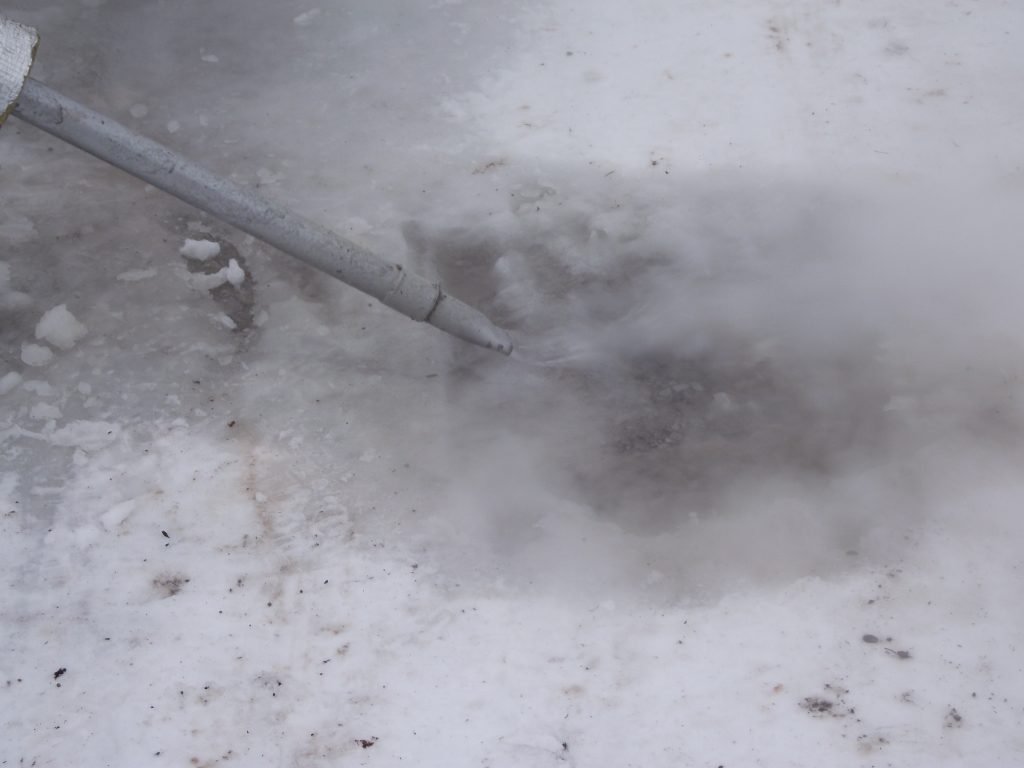
Although melting was achieved, however the method was very inefficient as the majority of steam doesn’t reach the snow.
Conclusion: Melting snow with a steaming hood is the most effective method to free big areas from snow. The biggest mobile steam generators produce 2000kg of steam per hour and have about 10 times the output than the machine used in the upper mentioned tests. With such a big generator in 4.5 minutes about ~890 kg = ~5m³ of snow can be melted. Per hour a reduction of roof load by more than 65m³ = ~11t is feasible.

